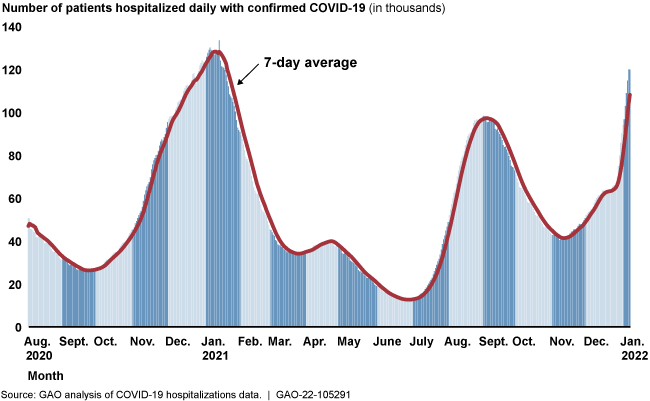|
Help |
Site Map
|
Health, Fitness and Style
AS OF APRIL 4, 2022
Background
Changes to the makeup of the U.S. Supreme Court in 2018 raise the possibility that Roe v. Wade could be severely undermined — or even overturned — essentially leaving the legality of abortion to individual states. A reversal of Roe could establish a legal path for states’ pre-1973 abortion bans, as well as currently unenforced post-1973 bans, to take effect.
Many state lawmakers continue to consider and enact abortion bans that fly in the face of constitutional standards and Roe’s precedent in anticipation of an eventual lawsuit on such a ban coming before a Supreme Court hostile to abortion rights.
Some bans prohibit abortion under all or nearly all circumstances, a tactic widely viewed as an attempt to provoke a legal challenge to Roe. Several of this type of ban that were passed by states have been blocked by court orders and would require further court action to be enforced.
Other bans enacted after Roe are designed to be “triggered” and take effect automatically or by swift state action if Roe is overturned. Several states even have laws declaring the state’s intent to ban abortion to whatever extent is permitted by the U.S. Constitution, making their desire to halt abortion access in the state clear. A few states have amended their constitution to declare that it does not contain any protection for abortion rights or allow public funds to be used for abortion.
Meanwhile, policymakers in some states have approved laws to protect abortion rights without relying on the Roe decision. Most of these policies prohibit the state from interfering with the right to obtain an abortion before viability or when necessary to protect the life or health of the pregnant person.
Visit our state legislation tracker for policy activity on all sexual and reproductive health topics.
Highlights
- 23 states have laws that could be used to restrict the legal status of abortion.
- 9 states retain their unenforced, pre-Roe abortion bans.
- 13 states have post-Roe laws to ban all or nearly all abortions that would be triggered if Roe were overturned.
- 9 states have unconstitutional post-Roe restrictions that are currently blocked by courts but could be brought back into effect with a court order in Roe’s absence.
- 7 states have laws that express the intent to restrict the right to legal abortion to the maximum extent permitted by the U.S. Supreme Court in the absence of Roe.
- 4 states have passed a constitutional amendment explicitly declaring that their constitution does not secure or protect the right to abortion or allow use of public funds for abortion.
- 16 states and the District of Columbia have laws that protect the right to abortion.
- 4 states and the District of Columbia have codified the right to abortion throughout pregnancy without state interference.
- 12 states explicitly permit abortion prior to viability or when necessary to protect the life or health of the pregnant person.
Printer-friendly version
TOPIC
GEOGRAPHY
- Northern America: United States
- Alabama, Alaska, Arizona, Arkansas, California, Colorado, Connecticut, Delaware, District of Columbia, Florida, Georgia, Hawaii, Idaho, Illinois, Indiana, Iowa, Kansas, Kentucky, Louisiana, Maine, Maryland, Massachusetts, Michigan, Minnesota, Mississippi, Missouri, Montana, Nebraska, Nevada, New Hampshire, New Jersey, New Mexico, New York, North Carolina, North Dakota, Ohio, Oklahoma, Oregon, Pennsylvania, Rhode Island, South Carolina, South Dakota, Tennessee, Texas, Utah, Vermont, Virginia, Washington, West Virginia, Wisconsin, Wyoming
Related Content
Guttmacher Policy Review
*State Policy Resources: The Guttmacher Institute monitors and analyzes state policy developments—including legislative, judicial and executive actions — on a broad range of issues related to sexual and reproductive health and rights. These resources, on such issues as access to and availability of abortion, contraceptive services and sex education, are updated regularly to provide a comprehensive picture of the state policy landscape.
Julia Sneden Wrote: My mother was a mini Imelda Marcos. She kept upwards of 40 pairs of shoes well into her 80's, and was crushed when she had to give up high heels following a heart attack at the age of 89. Her sole criterion in buying shoes was style, not comfort, and she was very proud of wearing size 5½ long after her feet had grown to 6½. While she had a pair of old oxfords for hiking and gardening, I never saw her wearing anything but high heels for shopping, visiting, teaching, church-going, and general around-the-house wear. She loved shoes so much that she would order a pair that caught her fancy from a catalogue. If they didn't fit, she would give them away unworn to a friend or the daughter of a friend, to an employee or to the churchwomen's sale.
more »
The fact that the genes of diverse invertebrates group together so faithfully, despite hundreds of millions of years of independent evolution, could indicate that for genes to jump around among chromosomes is a lot harder than scientists presumed from their studies of vertebrates, where genes have rearranged more frequently, likely because of genetic drift. “Animals like amphioxus [also called lancelet] live in huge populations where the rare mutants with rearranged chromosomes are at a disadvantage and typically die out, whereas, in small, subdivided populations, which is more typical of mammals, rearrangements are more likely to survive and spread. That’s one hypothesis.” more »
"More than 200,000 long-term care facility (LTCF) residents and staff have died due to COVID since the start of the pandemic (Figure 1). The CDC’s latest update reporting data on nursing home deaths as of January 30th pushes the reported number of deaths over this bleak milestone. This finding comes at a time when the national surge in cases due to the Omicron variant has started to subside, deaths are rising nationwide, and nursing homes have been working to increase vaccination and booster rates among residents and staff, particularly in light of the new federal rule requiring staff vaccination recently allowed to take effect by the Supreme Court. As of January 16th, approximately 82% of nursing home staff and 87% of nursing home residents are fully vaccinated." The total number of resident and staff deaths from these two sources, roughly 201,000, is likely an undercount of the true number of resident and staff deaths in LTCFs since it excludes deaths in long-term care settings other than nursing homes after June 30th, 2021. Additionally, not all states reported data on all types of LTCFs prior to June 2021." more »
Fast Facts: In our 9th comprehensive report on the COVID-19 pandemic, we provide updates on topics like pandemic emergency rental assistance and tax relief for businesses. In this report, GAO makes five new recommendations in the areas of emergency rental assistance, nutrition assistance, and tax relief for businesses. GAO is also designating the Department of Health and Human Services’ (HHS) leadership and coordination of a range of public health emergencies as high risk. This designation is in keeping with long-standing efforts to identify federal programs needing transformation, and to help ensure sustained executive branch and congressional attention so the nation is prepared for future emergencies. more »
|

Senior Women Health & Nutrition:
Even healthy diets might not
give your body all of the vitamins and
minerals it needs every day. When women
experience iron deficiency
anemia, the
side-effects can be damaging. If you are
experiencing fatigue, weakness or even
irregular heartbeats, don't just blame old
age! Consult with your doctor about getting
your iron levels checked.
|









